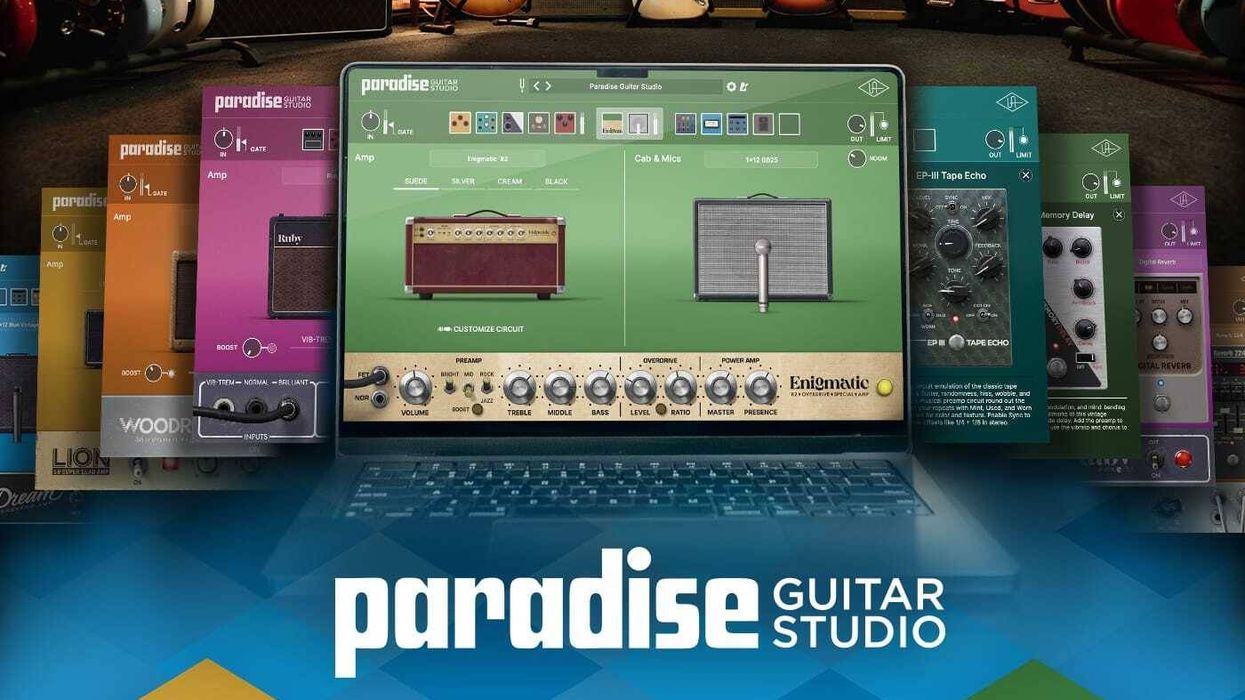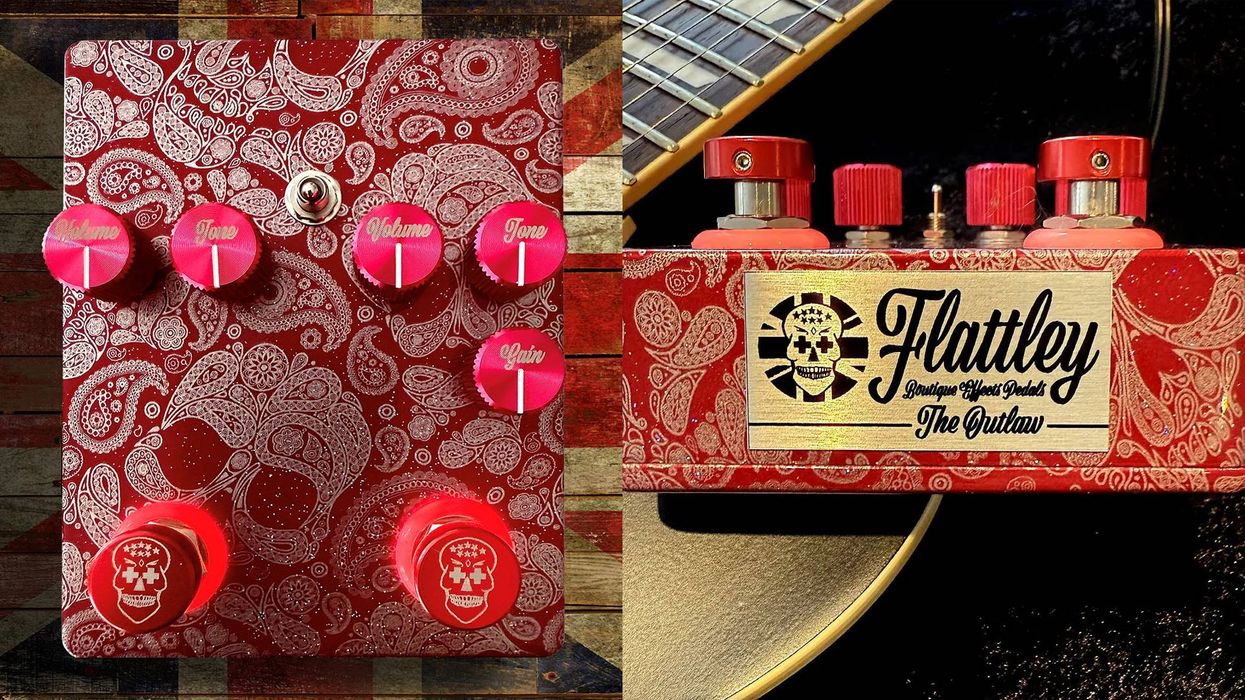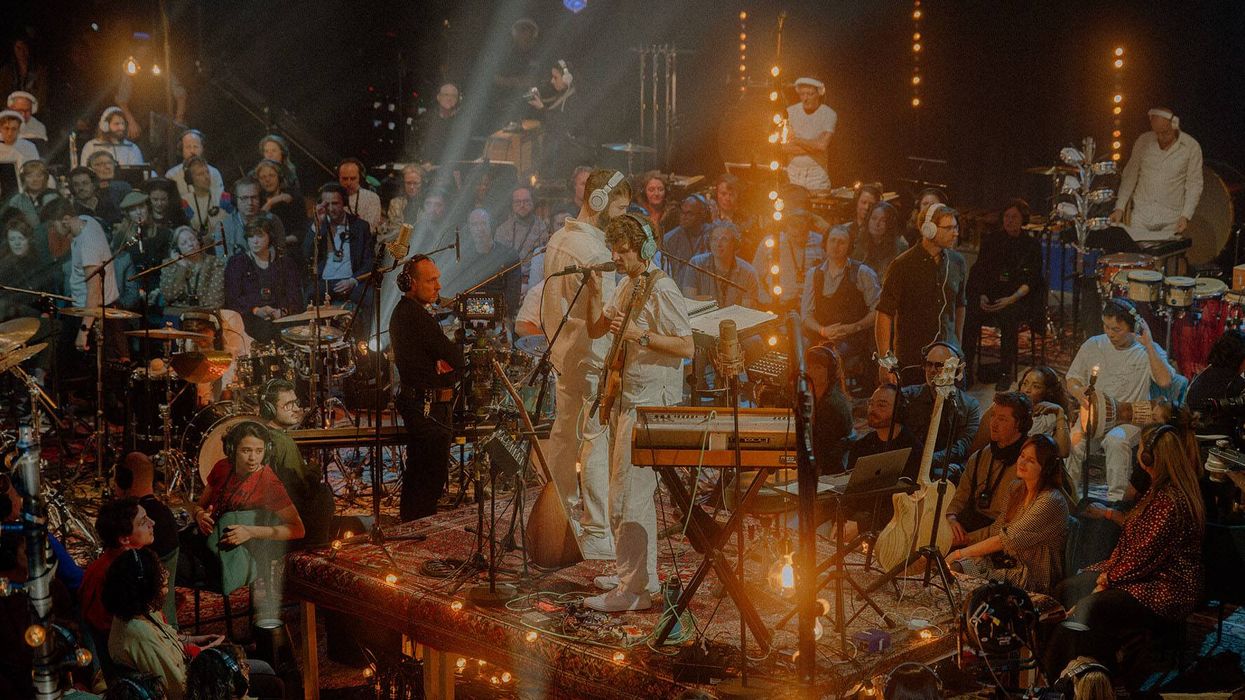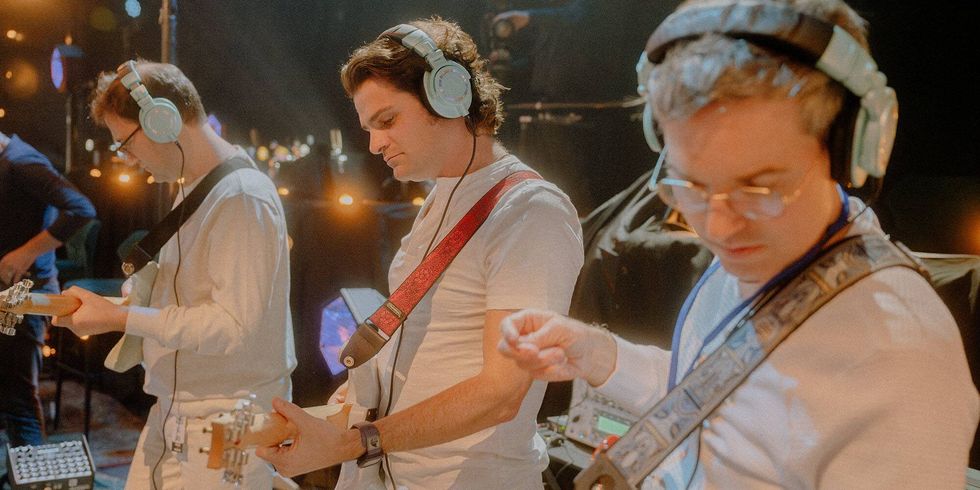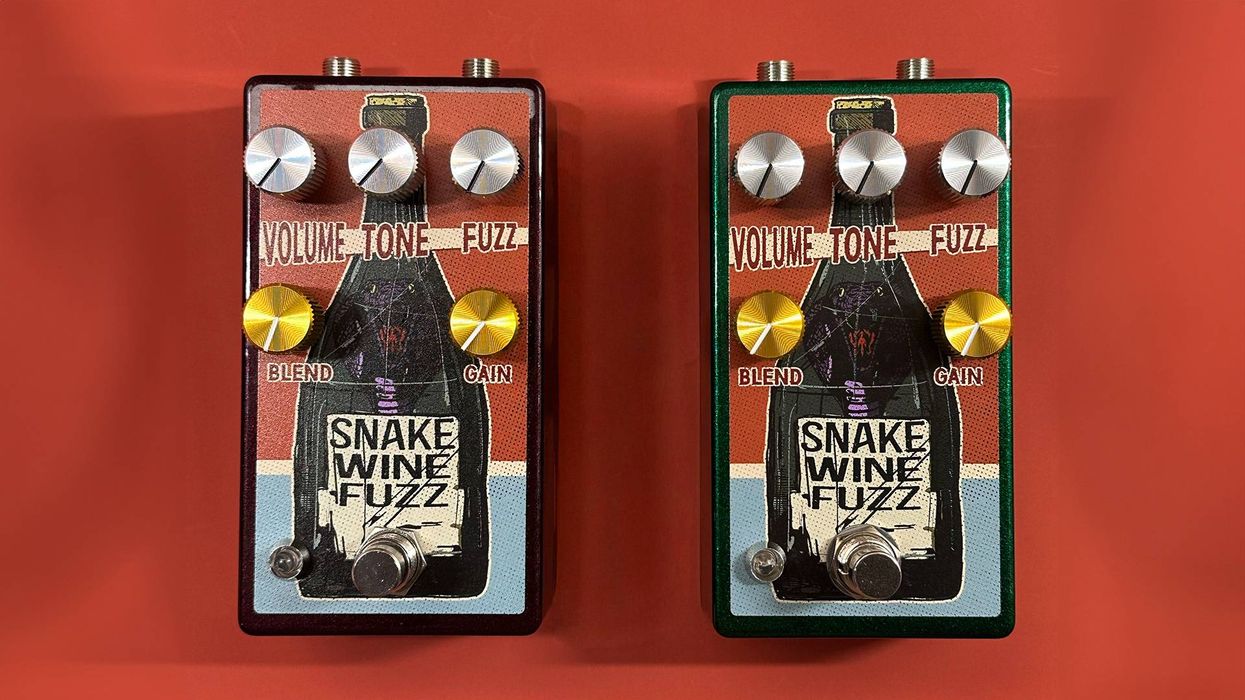Last month, we began
exploring compression for
guitar, primarily from plug-ins
and outboard hardware
[“Secrets of Compression, Pt.1,” August 2011]. This month,
we’ll explore the same subject
as it relates to guitar pedals. As
we all know, any time you talk
about pedals with guitar players,
opinions fly wildly. That
said, it’s worth your while to
get a broad perspective of what
stompbox compressors can do
for your sound.
In the studio, compression
is often added after the fact. In
other words, the guitar parts
are tracked with little to no
compression, and the effects are
added either on the console or
in your digital audio workstation
(DAW). This delivers the
most production control, as the
amount of processing can be
increased or reduced without
affecting the original audio. If
you record with “in-line” compression—
that is, with a pedal
or rack unit in the recorded
signal chain—the effect cannot
be removed later. That means
you are stuck with what you’ve
tracked. While there are situations
where compression and
other effects are an essential
part of your sound, it’s sometimes
advantageous to track
without them.
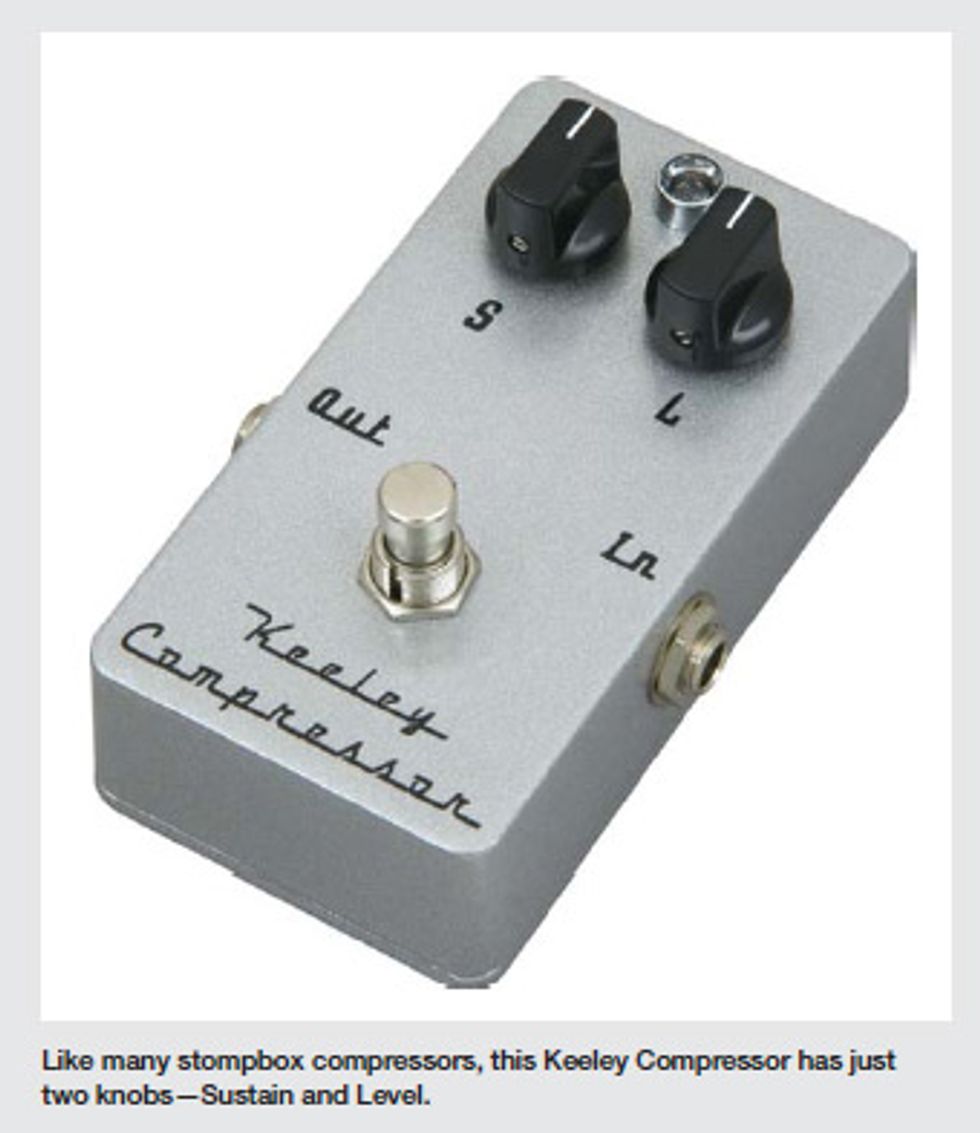
With pedals, compression is primarily about dynamic control (smoothing out string response), boost, and sustain. In fact, some pedals, such as the Boss CS-3 and T-Rex ToneBug Sustainer, are specifically marketed as compressors/sustainers. While some manufacturers keep it simple (and somewhat limited) with Input and Output knobs, others offer additional controls such as Level, Tone, Gain, Attack, and Sustain.
Veteran guitarist Sam Broussard (Steve Riley and the Mamou Playboys, Jimmy Buffett, Linda Ronstadt) uses compression pedals both live and in the studio. “I didn’t know what compression was when I was younger,” he says, “and I wondered why they weren’t called sustain pedals— because that’s what they did. Now I know that they have controls similar to the simple and wonderful Teletronics/ Universal Audio LA-2A studio compressor. That unit has a knob to increase input signal to the unit’s squashing circuit, and a gain knob. Typical pedals have Sustain and Level knobs, and, like the hardware, they squash the dynamics. Sustain is a major byproduct of the adjustments— the signal gets grabbed, held for a bit, and then dropped. It’s not love, but it’ll do. So I always squash a little when playing slide or twang, and combined with distortion I might get that elusive bloom of the tone expanding—opening up—in the ‘held’ period, a second after the strings are struck.”
But compression pedals don’t work in every situation. “They make your notes die later,” Broussard says, “so your rig feels more forgiving. But compressor pedals often don’t sound good for blues. Smoothed-out dynamics aren’t appropriate for raw juke-joint music.”
I asked Broussard which pedals he’s currently using and what they do for his sound. “The Boss CS-3 is a good workhorse, if not exactly a tone machine,” he says. “But there are many mods for them on the ’net. And they have an Attack (or anti-attack) knob that I don’t use. More expensive pedals preserve more of the guitar’s tone, but I find there’s not enough of me in the out-front mix to warrant studio-quality tone and expense. I have a Keeley pedal in the chain for studio work, but you must remember that another byproduct of compression is a rise in the noise floor—hum and hiss. This isn’t much of a problem at a gig—if you can hear the noise, the song stopped or your drummer left. In the studio, however, it’s critical to avoid noise.”
Every compression pedal will have a slightly different tone and respond differently to your particular technique. The $20 Behringer DC9 won’t sound the same as the tube-based $350 Effectrode Photo-Optical Tube Compressor. As with other gear, price does not always equate to quality, but generally speaking, the more expensive units use better components and materials. Also, compression pedals aren’t for electric work alone. Try plugging your acoustic DI into a compression pedal. Compression can add a nice sustain to both chords and single-note lines played on a flattop.
Overall, you should use compression pedals judiciously. Too much compression can squash the dynamics out of your sound. But just the right amount can not only give you a nice boost, but also make your tone thicker. Like other effects, to get a grip on compression, you just need to experiment with those knobs.
 Rich Tozzoli is a
Grammy-nominated
engineer and mixer who
has worked with artists
ranging from Al Di
Meola to David Bowie.
A life-long guitarist, he’s
also the author of Pro Tools Surround
Sound Mixing and composes for the
likes of Fox NFL, Discovery Channel,
Nickelodeon, and HBO.
Rich Tozzoli is a
Grammy-nominated
engineer and mixer who
has worked with artists
ranging from Al Di
Meola to David Bowie.
A life-long guitarist, he’s
also the author of Pro Tools Surround
Sound Mixing and composes for the
likes of Fox NFL, Discovery Channel,
Nickelodeon, and HBO.
